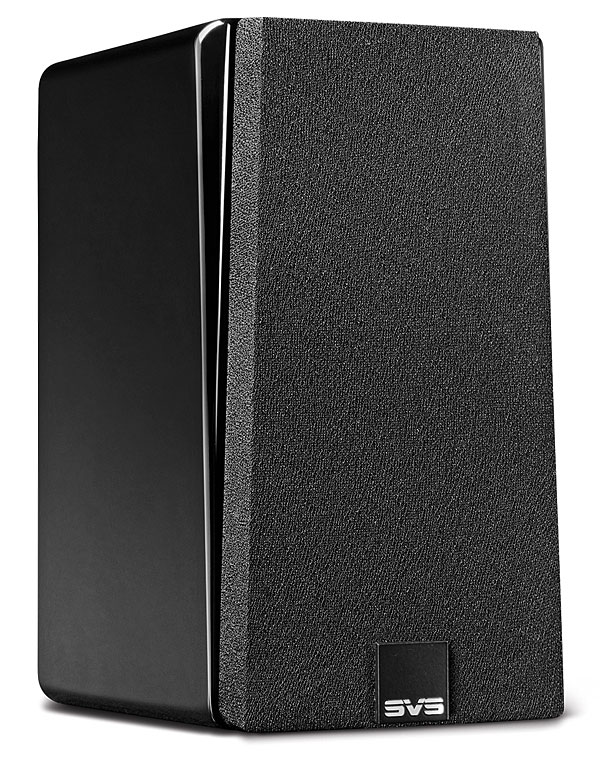SVS Prime Satellite 5.1 Speaker System Review Page 2
Of course, the pint-sized Satellites couldn’t compete on deep stuff, like the 35-Hz synth-bass of Feist’s dub-music-hall trifle “Tout Doucement” (Let It Die), so I switched to my preamp’s Stereo mode to bring the SB-1000 sub into play. This was now a fair fight, and the Satellites very nearly matched the heavyweights on the detail and delicacy of the Canadienne’s carefully nuanced vocal breathiness, while the 2.1-channel configuration clearly bettered them in deep-bass extension. And, unusually for such small speakers, sub/sat blending was fine from the get-go. Interestingly, when I experimented with even slightly higher or lower crossover settings, it seemed pretty clear that 80 Hz was the sweet spot; a 10-Hz drop to 70 Hz opened a just-perceptible lightness in the midbass, while 90 Hz brought about an equivalently subtle thickening. Though of course every room and setup location will deliver different results.
Nearly Perfect
Good as the Prime Satellites were, I still made a few notations on my pad, items I cannot in good conscience brand as flaws in a $135 loudspeaker, but that due diligence demands I mention. There seemed to be a response emphasis somewhere in the upper octaves that made certain sounds, like a few ride cymbals and massed strings (and occasional vocal tones), project a bit more forward than others, but this was almost too mild to call out at all. The SVS satellites’ uppermost octaves sounded otherwise quite smooth and balanced, but they lacked that last bit of air and finesse on elements such as brushed cymbals or sharp transients like finger-snaps, which reproduced just a shade less openly or incisively than via my long-term monitors. And while the Satellites imaged very sharply and solidly indeed, left to right, they seemed to throw what depth they could muster mostly forward, without much illusion of stage depth or height.
Back in the positives column, useful volume via my 150-watts-per-channel main power amp was impressive, with plenty of clean level for convincingly realistic playback on natural-acoustic recordings like jazz or chamber music, but just a couple of decibels short of the same for big-orchestra (or, of course, rock-concert) equivalents; let’s remember, however, that this was in a fairly large, fairly dead room. Most smaller-than-small (and cheaper-than-cheap) speakers tend to get harsh in the treble when pushed hard, but the SVS Satellites remained intact up top. Instead, they eventually warned of incipient too-loudness by developing just a hint of impending “thwack” on big midbass transients. In my room, this volume required power output fairly close to my amp’s upper reaches, making SVS’s listed recommended power range of 20 to 150 watts more plausible than is sometimes the case with small speakers.

This shortcoming—if shortcoming it was—was largely eradicated when playing multichannel music. Cueing up the Band’s Music from Big Pink on SACD enabled clean, dynamic listening that remained unstrained even at console-chair levels. The SVS layout had plenty of resolution to display all the album’s homespun virtues and warts alike: the cheesy reverb and dire EQ on most of the piano tracks, the mud-bucket bass sound, and the highly variable and heavily EQ’d vocal tracks—except for Richard Manuel’s on “Lonesome Suzie.” (Ah, the Band. They’re all dead now, except for Robbie and Garth. Damn, I feel old.) This one track’s vocal leaped out of the speakers with unsullied, audiophile-rich, Neumann U-87 immediacy. (I’m guessing about the mic, of course.)
Some say that musical acumen doesn’t always translate fully to movie-sound excellence, but I figure accurate’s accurate, and the SVS Prime Satellite setup, at least, tended to confirm my belief. I kept the SVS suite as my main listening source for nearly three weeks of everyday viewing/listening, covering everything from TV news to NFL games to Blu-ray movies, and I never once felt shortchanged. Having three identical speakers across the front obviously makes for a tonally solid front stage, and it remains my ideal; there was less tonal shifting well off axis from the Prime Sat center than from any horizontal center, including many three-ways. In the surround positions, the Prime Satellites, like most other small two-ways, worked very adequately.
The system as a whole proved capable out of all proportion to either size or price. Opie’s Apollo 13 may be 20 years old, but the late-edition Blu-ray remains a stern test of home-theater sound (and picture!), one that the SVS suite passed with honors. Despite its space-opera genre, this is a fairly talky movie, and the Satellites showed fine dialogue intelligibility and naturalness, even in the chaotic, many-voices Mission Control shouting scenes. And of course, the blast-off (and re-entry) sequences are all-channels, high-level, broad-band wring-outs; here the SD-1000 sub showed off level and deep-bass abilities that are surely difficult to equal at this price. SVS’s cheapest sub goes plenty loud (within about 8 dB of my PC-12Plus, which dwarfs it in both size and price) and plenty low, with solid, genuine output well below 30 Hz and without any real excesses in the sensitive 60-to-100-Hz octave.
Conclusion
So, putting all the pieces together, what we have here is a kilobuck 5.1 speaker system that reproduces the full audio range with real authority, does so with the kind of tonal balance and musicality you might expect from a bookshelf pair at this price, and (given reasonable power) will play loud enough to satisfy most listeners, even in a good-sized room. That may sound like a pretty basic recipe, but trust me: At this price, it’s a genuine achievement.




























































